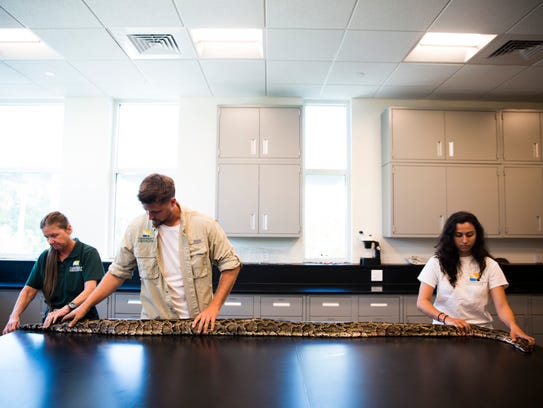
A Pitón Birmanica é uma grande ameaça para os animais da Florida e é uma espécie invasora .Estudos recentes demonstram que podem chegar a ingerir um animal de um peso maior que o seu.
Enquanto procuravam pitóns no Parque Estatal Collier Seminole, um grupo de biólogos que trabalham em temas relacionados com a conservação a sul da Florida e gestão dos terrenos fizeram um surpreendente achado: viram que uma pitón birmanica de quase 3,5 metros tinha devorado uma cria de cervo que pesava mais que o réptil.
Esta descoberta leva a supor aquilo que se converteu no maior ratio entre o peso do predador e a sua presa, até à data.A serpente pesava aproximadamente 14 kilos e o cervo 15, como explicou Ian Bartoszek, coordenador da equipa de investigadores. o cientista qualificou o achado como « surrealista ». " Esta descoberta mostrou-nos aquilo que é capaz de fazer este animal " declarou o chefe da equipa. *
* Tradução de " pintorlopes " sendo um breve resumo do articulado. As minhas desculpas pelas falhas e, ou, omissões.
Anexo sob estas linhas duas fotos que obtive na blogosfera para melhor entender-mos do que estamos a falar.

| ||
| Cervo e cria |

